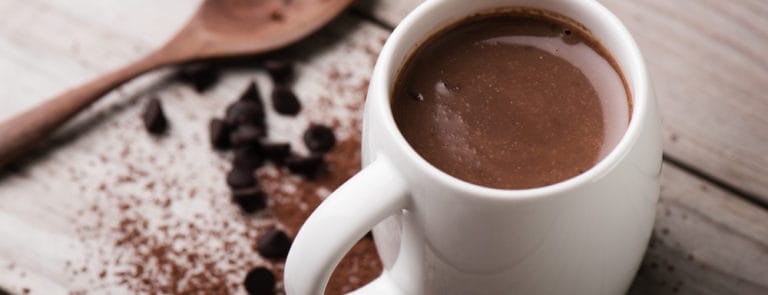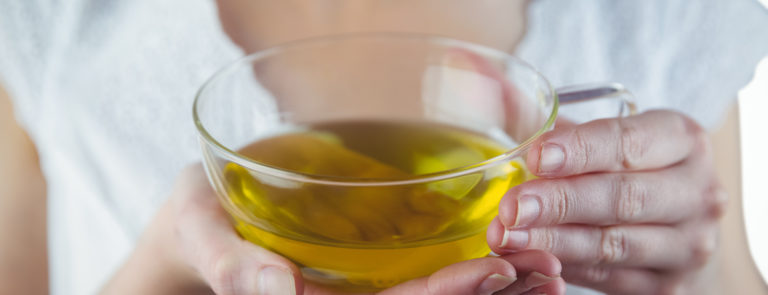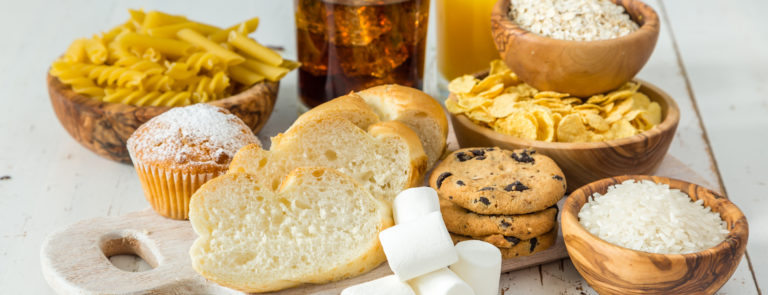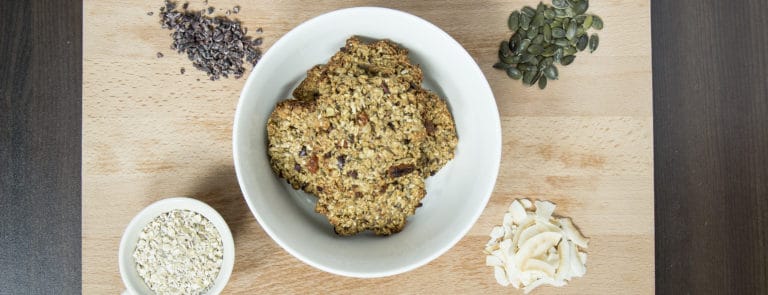10% off £35
Cacao powder: Benefits, uses and differences to cocoa powder

It feels like clean-eating food bloggers, nutritionists and PTs everywhere are adding a sprinkling of cacao to most things they eat. Everything from protein balls to porridge. But is cacao powder different to cocoa? Can you eat it if you’re vegan? Is it actually good for you? And does it taste anything like chocolate?
If you’re committing to a healthier lifestyle, you’re probably looking for something to replace the squares of milk chocolate you usually reach for when you get the mid-afternoon munchies. Could cacao help to fill that gap?
Read on to get the lowdown on this chocolate alternative. And we also share a few creative ways to include this superfood in your diet.
What is cacao powder?
Cacao powder is a raw and much less processed alternative to standard chocolate. Due to being densely packed with some powerful nutrients, it’s become a well-respected superfood. You may also see cacao powder called ‘raw cocoa.’
In its pure form, there’s no dairy or sugar added to cacao powder. This makes this popular plant-based ingredient suitable for people following a vegan or dairy-free diet.
Summary
- Cacao is a less processed form of chocolate with a superfood reputation.
- You’ll sometimes see cacao powder called raw cacao.
What is the difference between cacao and cocoa powder?
Cacao and cocoa both start life as a seed on the same plant – the Theobroma Cacao. The difference in the chocolate products produced from the seeds of this tree is down to how they are processed. To be specific, it depends on how much heat is involved in production.
Cacao powder vs cocoa powder
-
Both cacao powder and cocoa powder start as beans (or more accurately, seeds) harvested from the cacao tree.
-
For cacao powder, the unroasted beans are cold-pressed and milled into a powder. This retains the nutritional properties of the raw seeds. Being plant-based and containing few additives, it’s a great alternative to standard cocoa powder for vegans.2
-
Cocoa powder is processed at a much higher temperature using roasted beans. Roasting the beans allows the chocolate flavour to develop more and adds a sweeter taste. Packaged cocoa powder also commonly contains added sugar and dairy. This makes it unsuitable for vegans and people with dairy allergies and intolerances.
- When it comes to taste and texture, less processing means cacao can be grittier than cocoa. Cacao also has a deep, earthy flavour with a hint of bitterness.
Summary
- Cacao powder is processed at a much lower temperature and uses unroasted beans.
- There’s a bitterness to the taste of cacao and it also has a grittier texture than cocoa.
- Cocoa powder often contains dairy and added sugar.
Is cacao powder healthier?
A raw cacao powder offers more nourishment than you get from your standard chocolate bar. Because there’s less heat and processing involved in the production of the raw product, you can expect to receive a bigger dose of the original bean’s nutritional superpowers. As a result, when eaten in moderation, cacao can offer a number of health benefits.
In contrast, chocolate is often (wrongly) credited with having the same nutritional benefits as cacao.1 In reality, the nutritional goodness of the cacao seeds significantly reduces when they’re exposed to heat during processing. On top of this, there’s also the saturated fat and refined sugar that’s added to most milk and white chocolate products to consider.
Summary
- There’s a significant difference in the nutritional contribution of cocoa and cacao to your diet.
- Raw cacao powder retains more of the nutritional value of the bean than more processed cocoa products.
- Cacao powder also contains less saturated fat and refined sugar than most standard chocolate products.
A nutritional comparison
Here, we provide a nutritional breakdown of a typical cocoa powder product and a less processed alternative.3
| Cocoa Mix (hot chocolate) | Unsweetened cocoa powder | |
|---|---|---|
| Calories | 111 | 63.0 |
| Fibre | 1g | 9.3g |
| Sugars | 18.4g | 0.5g |
| Fat | 1.1g | 3.8g |
| Saturated fat | 0.7g | 2.3g |
| Magnesium | 23.2g | 140mg |
| Iron | 0.3g | 3.9g |
| Protein | 1.9g | 5.5g |
Summary
- Purer cacao products are rich sources of minerals (see iron and magnesium above.)
- There’s considerably more sugar, fat and calories in the more processed cocoa mix.
- When buying cocoa products, take a look at the ingredients label to check for the sugar and fat content.
4 cacao powder benefits
The cacao powder nutrition benefits are largely down to it being a rich source of four important nutrients.
-
Flavonoids
These are plant-based antioxidants. These are useful for combatting the effects of everyday toxins. This helps to keep free radicals in check and reduces the damage caused by oxidative stress. Flavonoids are also often linked to heart health benefits.4
-
Magnesium
As the mineral behind hundreds of chemical reactions around your body, there are many benefits of adding foods containing magnesium to your diet. For example, it’s important for energy production, blood pressure regulation and bone and teeth health.5
-
Iron
Cacao is a great option if you’re following a plant-based diet and are looking for a source of iron. However, as the iron is plant rather than meat-based (so a non-haem iron source), to get maximum benefits you may want to combine it with something containing vitamin C.6
-
Phenylethylamine (PEA)
Also known as the ‘love chemical’, the PEA in cacao is thought to lead to the mood and energy-boosting effects we may experience after eating it.7
Summary
- Cacao is super-charged with a number of nutrients that support a whole range of body functions.
- This includes some powerful antioxidants called flavonoids.
- It can help anyone following a plant-based diet to bolster their iron and magnesium intake.
- You’ll also get a mood-boosting dose of the love chemical, phenylethylamine.
Can I use cocoa powder instead of cacao powder?
While you can substitute one for the other, you should expect there to be a difference in flavour and consistency. In general, it’s best to keep to the ingredient that your recipe suggests.
If you find yourself swapping ingredients, you may need to make a few adjustments in quantities. For example, cacao powder has a stronger flavour. You should also expect it to be more difficult to dissolve than standard cocoa powder. So, when substituting you may need to alter the amount of powder used and the liquid content of the recipe.
Summary
- You can use cacao powder in a similar way to cocoa powder.
- If you’re substituting one for another in a recipe, you should expect to make a few adjustments to achieve the right flavour and consistency.
5 uses of cacao powder
Did you know that simply swallowing a couple of teaspoons isn’t the only way to get it into your diet?
Cacao powder can be added to everyday meals to supercharge them. Or you can decide to make sweet treats like vegan brownies and raw fruit nut bites.
But can the raw unsweetened bean ever taste as good as processed chocolate? Honestly, it will probably never taste exactly like chocolate (unless you add copious amounts of sugar that is.) But it can still be a tasty and nutritious addition to your snacks and meals.
Here are five quick and easy cacao powder recipes.
1. Warm yourself up with cacao hot chocolate
Pour some boiling water into a mug containing one teaspoon of cacao and then stir. Combine with a dash of almond milk and voila, you have a rich vegan hot chocolate to warm you up on cold days or nights. Add a little sugar or a sugar substitute if you need to.
2. Treat yourself to a chocolate and banana protein smoothie
A cacao-infused smoothie is perfect for after a workout. Try blending one large frozen banana (cut into slices), two tablespoons of cacao powder, two tablespoons of almond butter, 235ml of almond milk and one level scoop of your chosen chocolate protein.
3. Kick-start your breakfast
Next time you reach for a bowl of your favourite cereal, why not spoon in one teaspoon of cacao and a small handful of your favourite dried fruits? If you prefer to kick-start your mornings with porridge, you can add cacao to make it extra tasty and nutritious.
4. Mix things up with flavoursome yoghurt
It’s easy to add a sprinkling of cacao to your yoghurt (and it shouldn’t alter the taste too much if you use a small amount.) If you prefer a stronger flavour, keep adding more until the flavour comes through.
5. Bake your own treats
You can replace chocolate in a recipe with cacao powder. If you fancy experimenting with baking, try these cacao, oat and peanut butter bites. And how about this cacao, avocado and manuka honey mousse for a chocolate dessert?
Summary
- There are lots of ways to make cacao powder part of your daily diet.
- Cacao powder adds additional flavour and nutrition to smoothies, breakfast cereals and yoghurts.
- It also works well mixed with water and almond milk as a dairy-free alternative to hot chocolate.
Cacao powder: Is it better for you than chocolate?
Cacao powder is a ‘raw’ alternative to standard chocolate. Due to being less processed than standard cocoa products, it’s retains more of the amazing nutritional benefits of the cacao bean. This includes antioxidant plant compounds, as well as being a rich source of iron and magnesium.
Although it has a bitter taste compared to your average milk chocolate, it makes a great addition to a wide range of snacks, drinks and meals. However, always check the label of your product to ensure minimal processing and that there’s no unwanted additional sugar lurking within.
Last updated: 23 March 2021
- https://www.bhf.org.uk/informationsupport/heart-matters-magazine/nutrition/ask-the-expert/chocolate
- https://nutritiondata.self.com/facts/beverages/3888/2
- https://nutritiondata.self.com/facts/sweets/5471/2
- https://pubmed.ncbi.nlm.nih.gov/26491142/
- https://ods.od.nih.gov/factsheets/Magnesium-HealthProfessional/#h2
- https://www.nutrition.org.uk/nutritionscience/nutrients-food-and-ingredients/minerals-and-trace-elements.html/
- https://nootropicsexpert.com/cacao/














